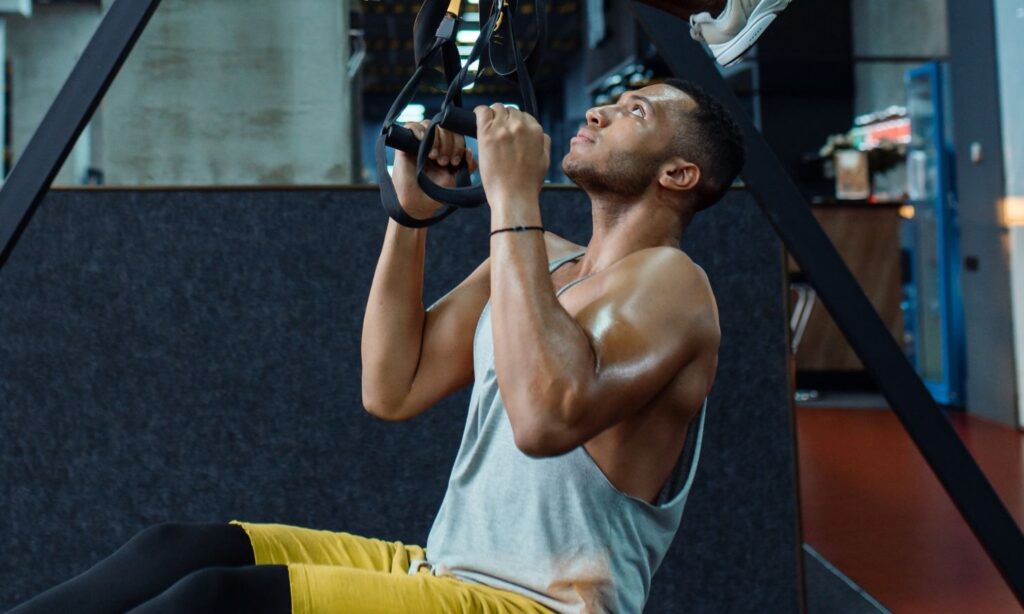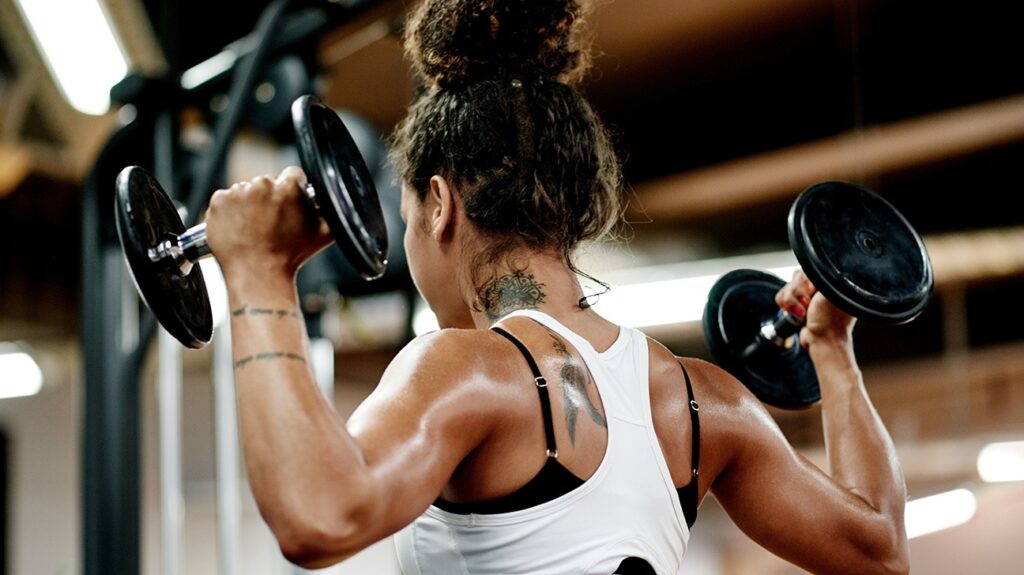Lats Workout – When it comes to building an impressive physique, few muscle groups make as much visual impact as the latissimus dorsi — commonly known as the lats.
These broad, wing-like muscles stretch from the middle of your back to the sides of your torso and are largely responsible for that classic V-taper shape many lifters strive for.
Whether your goal is to improve posture, gain strength, boost performance, or simply widen your back, a well-structured lats workout is essential.
In this guide, you’ll learn what the lats are, why training them matters, and how to effectively target them with both gym and at-home exercises. Plus, you’ll get a sample routine and tips for maximizing your results.
What Are the Lats?
The latissimus dorsi are the largest muscles in your upper body. They originate in the mid-to-lower spine and attach to the humerus (upper arm bone). The lats are responsible for movements like:
- Pulling the arms down and back
- Extending and rotating the shoulders
- Assisting in posture and spinal stability
- In practical terms, strong lats help with pulling movements (like rows and pull-ups), and they support everything from deadlifts to swimming and even posture during standing and sitting.
Why Train the Lats?
1. Improved Upper Body Strength
Lats play a major role in pulling strength. Training them improves performance in pull-ups, rows, climbing, and other functional movements.
2. Better Aesthetics
A well-developed lat muscle contributes to a V-shaped torso. This creates the illusion of a smaller waist and a broader upper body, which is often a key aesthetic goal.
3. Enhanced Posture
Strong lats help maintain an upright posture by supporting the spine and counteracting the forward pull of chest muscles — especially important for people who sit a lot.
4. Injury Prevention
Balanced training that includes the back (not just the chest and arms) helps prevent muscle imbalances, which can lead to shoulder and neck pain or injury.
How to Target the Lats
To properly train your lats, you should include a mix of vertical and horizontal pulling exercises. The lats respond well to both bodyweight and weighted resistance training, and they thrive on progressive overload — increasing resistance, reps, or intensity over time.
There are two primary types of lat movements:
- Vertical Pulls: Pull-ups, chin-ups, lat pulldowns
- Horizontal Pulls: Barbell rows, dumbbell rows, seated rows
Both types are important for fully developing the lats and the surrounding upper back muscles.
Best Lat Exercises (Gym and Home Options)
Below are some of the most effective exercises for targeting the lats. Aim to include a variety in your routine to challenge the muscle from different angles.
1. Pull-Ups (or Assisted Pull-Ups)
Muscles Targeted: Lats, biceps, upper back
- Grab the bar with a wide grip, palms facing away.
- Hang with arms fully extended.
- Pull your chest up to the bar by squeezing your lats and driving elbows down.
- Lower under control.
Tip: If you can’t do a full pull-up, use an assisted pull-up machine or resistance bands.
2. Lat Pulldowns
Muscles Targeted: Lats, rear delts, biceps
- Sit at a cable pulldown machine and grab the bar wide.
- Pull the bar down to your upper chest.
- Squeeze your shoulder blades together.
- Slowly return to the start.
Variation: Try underhand grip pulldowns to slightly change the angle and target different fibers.
3. Barbell Bent-Over Rows
Muscles Targeted: Lats, traps, rhomboids, erector spinae
- Hold a barbell with an overhand grip, hinge at the hips, and let the bar hang.
- Pull the bar to your waist while keeping your elbows close to your body.
- Lower the bar under control.
Form Tip: Avoid rounding your back. Keep your spine neutral throughout.
4. One-Arm Dumbbell Rows
Muscles Targeted: Lats, mid-back, core
- Place one knee and hand on a bench, the other hand holding a dumbbell.
- Pull the dumbbell toward your hip, squeezing your lat.
- Lower with control.
Bonus: Great unilateral movement to fix strength imbalances.
5. Seated Cable Rows
Muscles Targeted: Lats, mid-back, biceps
- Sit at a cable machine with your feet on the platform.
- Pull the handle toward your torso while keeping your elbows tucked in.
- Squeeze your lats, then release slowly.
Variation: Use a V-grip or wide bar to change the activation pattern.
6. Resistance Band Rows (Home Option)
Muscles Targeted: Lats, rhomboids, biceps
- Anchor the band to a sturdy point.
- Hold handles with both hands and pull toward your torso.
- Keep elbows close and squeeze your back at the peak.
Tip: Great for at-home workouts when gym access is limited.
7. Superman Hold (Bodyweight)
Muscles Targeted: Lats, spinal erectors, glutes
- Lie face down on a mat.
- Raise your arms, chest, and legs off the floor.
- Hold for 30–60 seconds.
Why: Though indirect, this strengthens your posterior chain and supports lat training.
Sample Lats Workout (Gym-Based)
Duration: 45–60 minutes
Frequency: 1–2 times per week
Equipment: Pull-up bar, cable machine, barbell, dumbbells
Warm-up:
- Jump rope or light rowing: 3 minutes
- Arm circles and band pull-aparts: 2 sets of 15
Workout:
- Pull-Ups – 3 sets of 6–10 reps
- Lat Pulldown – 3 sets of 10–12 reps
- Barbell Rows – 3 sets of 8–10 reps
- One-Arm Dumbbell Rows – 3 sets of 10 each arm
- Seated Cable Rows – 3 sets of 12–15 reps
- Straight Arm Cable Pulldown – 2 sets of 15
Finisher (Optional):
Superman hold – 3 rounds of 30 seconds
Cool down:
Stretch lats, shoulders, and spine. Hold each stretch for 20–30 seconds.
At-Home Lats Workout (No Equipment)
Warm-up:
- Jumping jacks: 1 minute
- Arm swings and wall angels: 2 sets of 10
Workout:
- Resistance Band Rows – 3 sets of 15 reps
- Superman Rows – 3 sets of 10 reps
- Door Frame Rows – 3 sets of 10–12 reps
- Reverse Snow Angels – 3 sets of 15 reps
- Plank Shoulder Taps – 3 sets of 20 taps
Cool down:
Child’s pose, cross-body lat stretch, and thread-the-needle pose.
Tips for Better Lats Training
- Mind-Muscle Connection: Focus on pulling with your back, not your arms. Visualize your elbows doing the work.
- Use Full Range of Motion: Let your arms fully extend at the bottom of the pull, and squeeze at the top.
- Progressive Overload: Add weight, increase reps, or reduce rest over time to continue progressing.
- Train with Intensity: Work close to failure to really challenge the muscle fibers.
- Recovery Matters: Rest and good nutrition are vital for muscle repair and growth.
Final Thoughts
Building your lats takes time, consistency, and smart programming. By combining vertical and horizontal pulls, focusing on form, and progressively overloading your workouts, you can develop a wide, powerful back that not only looks impressive but also functions at a high level.
Whether you train in a fully-equipped gym or from the comfort of your home, the right lats workout will boost your strength, improve your posture, and help you achieve the athletic, V-shaped physique you’re working for. Keep showing up, keep pulling, and results will follow.








